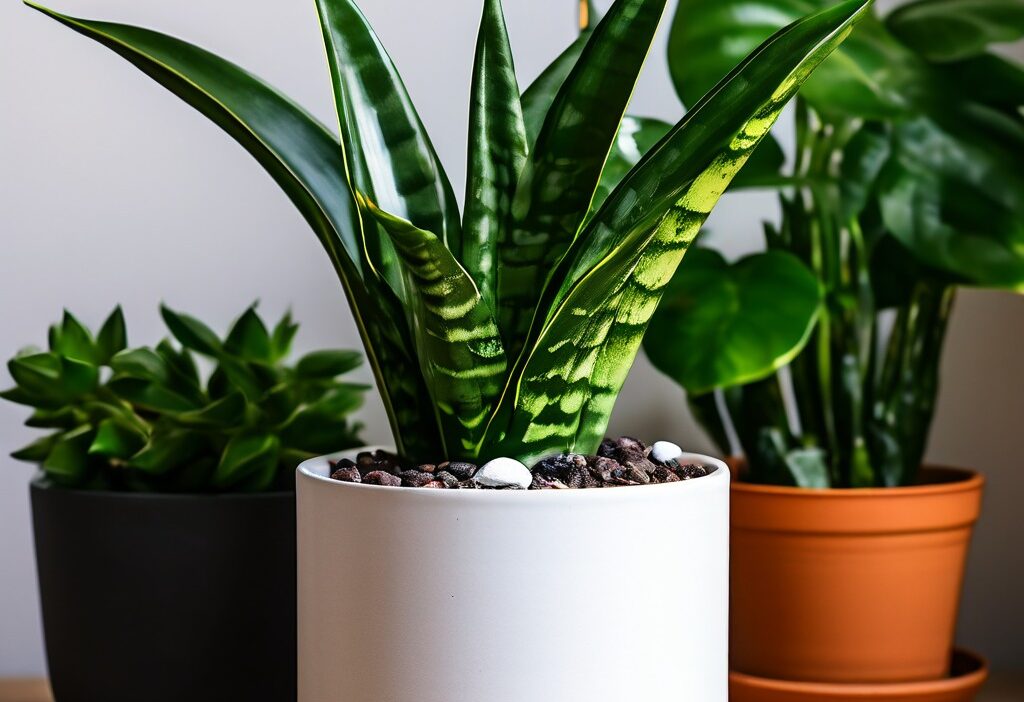Snake plants, also known as Dracaena trifasciata or Sansevieria, are among the most popular houseplants for their striking appearance, low-maintenance care, and incredible air-purifying properties. But can snake plants live outside? In this comprehensive guide, we’ll answer this question and explore everything from basic care tips to creative display ideas. Whether you’re a beginner or an experienced plant parent, this ultimate guide is designed to help you make the most of these versatile plants.
| Common Name | Snake plant, mother-in-law plant, mother-in-law’s tongue |
|---|---|
| Botanical Name | Dracaena trifasciata |
| Family | Asparagaceae |
| Plant Type | Evergreen perennial typically grown as a houseplant |
| Mature Size | 2-5 ft. tall as a houseplant |
| Sun Exposure | Sun to part shade |
| Soil Type | Sandy, well-drained |
| Soil pH | Slightly acidic to slightly alkaline |
| Bloom Time | Spring |
| Flower Color | White |
| Hardiness Zones | 9–11 (USDA) |
| Native Area | West Africa |
| Toxicity | Toxic to cats and dogs |
Can Snake Plants Live Outside?
Snake plants can thrive outdoors in USDA hardiness zones 9–11. They prefer a warm, shaded environment that mimics their natural habitat. With proper care and protection from frost, these hardy plants can make a beautiful addition to your outdoor garden.
Read also: The Ultimate Guide to Growing a Thriving Large Monstera Deliciosa
I. Understanding Snake Plants
A. Botanical Background
Snake plants, scientifically known as Dracaena trifasciata, were previously classified under the genus Sansevieria. Native to West Africa, these hardy plants have adapted to thrive in various conditions, making them a favorite for homes and gardens worldwide.
B. Varieties of Snake Plants
Snake plants come in a variety of shapes, sizes, and colors. Some popular varieties include:
- Sansevieria trifasciata ‘Laurentii’: Known for its yellow-edged leaves.
- Hahnii: A compact, bird’s nest variety.
- Sansevieria cylindrica: Features cylindrical, upright leaves.
- Bantel’s Sensation: Recognizable by its white vertical stripes.
For those seeking unique options, rare varieties like the ‘Whale Fin’ or ‘Starfish’ offer intriguing additions to any plant collection.
C. Growth Habits and Appearance
Snake plants are characterized by their stiff, sword-like leaves that grow upright. Depending on the variety, they can range from a few inches to several feet tall. Their architectural design makes them a stunning feature in any space.
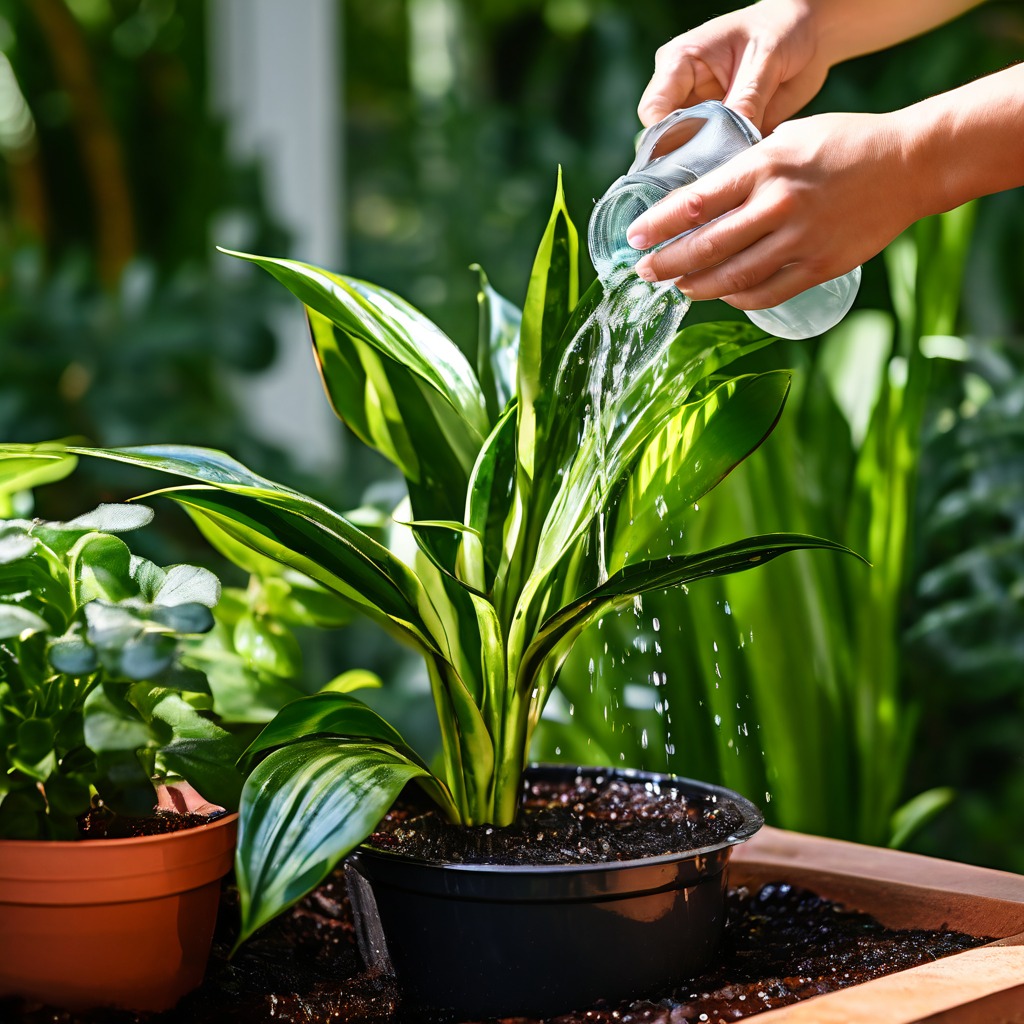
II. Essential Care for Thriving Snake Plants
Light: The Goldilocks Zone
Snake plants are the ultimate adapters when it comes to light. They can survive in low-light corners of your home, but they’ll grow faster and look healthier in bright, indirect light. An east- or west-facing window is ideal. If you’re placing your snake plant outside, avoid direct afternoon sun, which can cause leaf burn. Think of it as giving your plant a pair of sunglasses—protection without blocking out the fun.
Watering: Less Is More
Overwatering is the Achilles’ heel of snake plants. These drought-tolerant beauties store water in their leaves, so they can go weeks—or even a month—without a drink. Let the soil dry out completely between waterings, and when you do water, give it a thorough soak until water drains out of the bottom. Pro tip: If you’re unsure, wait a few more days before watering. Your snake plant will thank you for the neglect.
Soil: Drainage Is Key
Snake plants despise soggy roots, so well-draining soil is non-negotiable. A cactus or succulent mix works wonders, as it allows excess water to escape quickly. If you’re repotting, avoid heavy, moisture-retentive soils—they’re a one-way ticket to root rot.
Temperature: Keep It Cozy
Snake plants prefer temperatures between 65-80°F (18-27°C). They’re not fans of the cold, so if you’re growing them outdoors, bring them inside when temperatures drop below 50°F (10°C). Indoors, keep them away from drafty windows or air conditioning vents.
Humidity: No Fuss, No Muss
One of the best things about snake plants? They’re not picky about humidity. Whether your home is a dry desert or a tropical paradise, your snake plant will adapt without complaint. No misting or humidifiers required.
Fertilizing: A Little Goes a Long Way
Snake plants are light eaters. During the growing season (spring and summer), a balanced liquid fertilizer diluted to half strength is all they need. Over-fertilizing can lead to weak, floppy leaves, so less is definitely more.
Potting: Snug but Not Stifled
Snake plants like to be a little rootbound, so there’s no need to repot frequently. When you do, choose a pot with drainage holes to prevent waterlogging. Terracotta pots are a great option, as they allow the soil to dry out more quickly.

Propagation: Share the Love
Want to expand your snake plant collection? Propagation is a breeze. You can either take leaf cuttings or divide the rhizomes (roots). Both methods are straightforward and rewarding, making it easy to share the plant love with friends and family.
III. Advanced Care and Maintenance
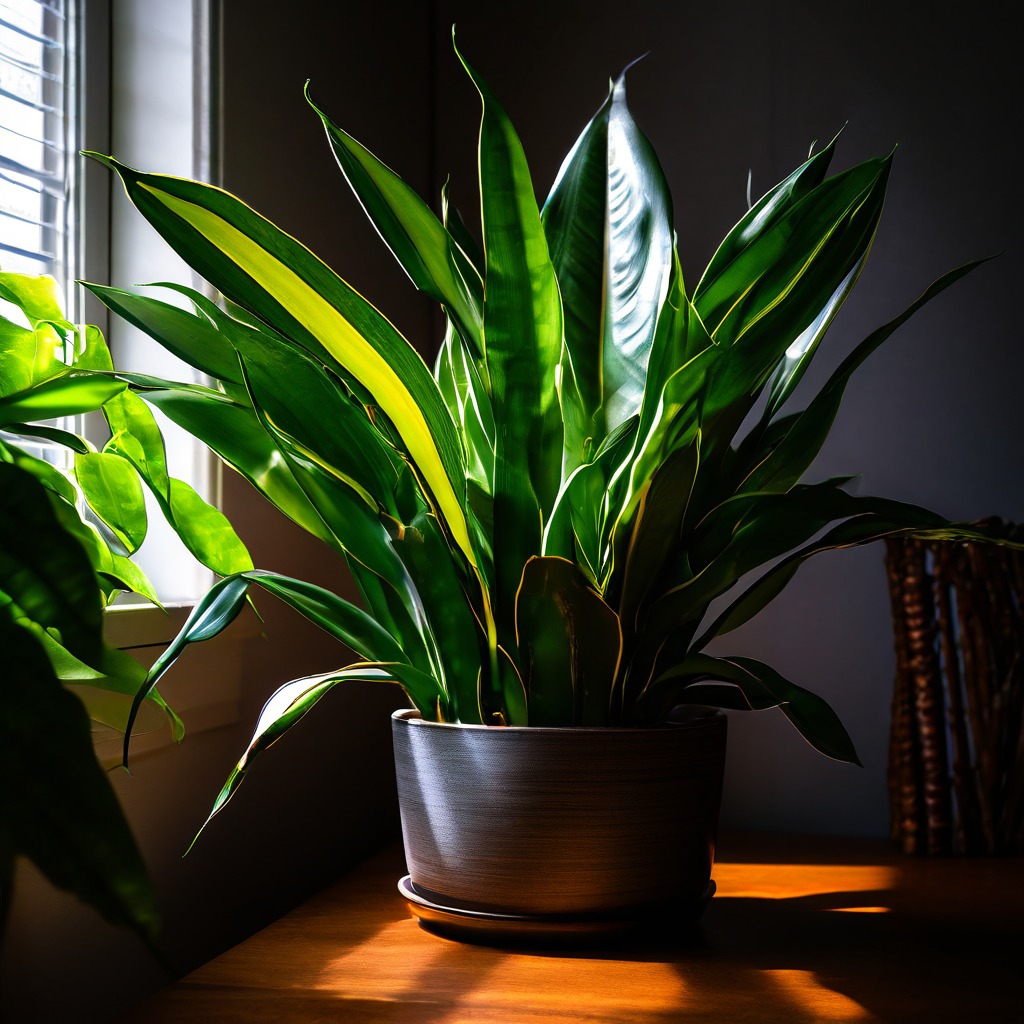
A. Repotting
Repot your snake plant every 2-3 years or when it becomes root-bound. Spring is the best time for this task. Choose a pot that’s one size larger to accommodate growth.
B. Pruning
Remove damaged or yellowing leaves using clean, sharp tools. Regular pruning keeps your plant healthy and visually appealing.
C. Dusting
Dust accumulation can hinder photosynthesis. Gently wipe the leaves with a damp cloth every few weeks to keep them clean.
D. Encouraging Blooms
While rare indoors, snake plants can produce fragrant, white flowers under optimal conditions. Adequate light and allowing the plant to become slightly root-bound may encourage blooms.
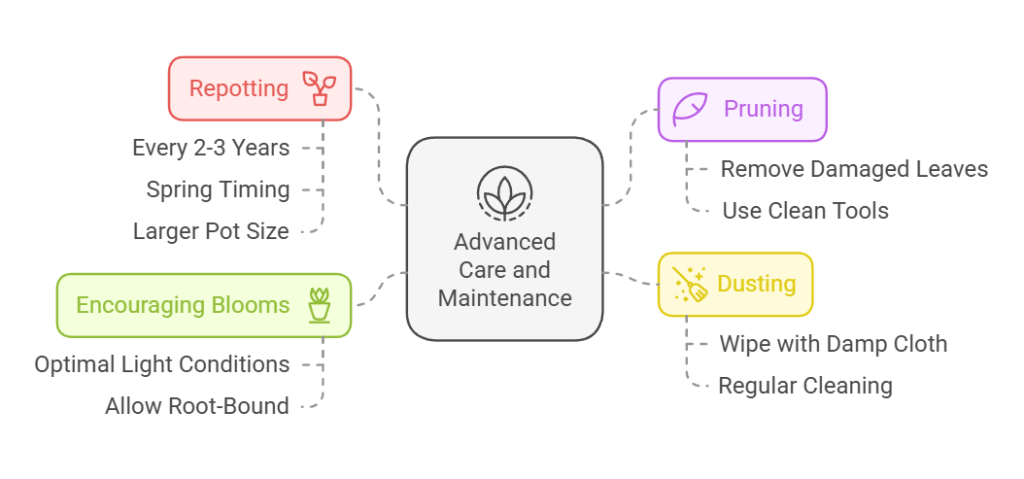
IV. Propagation Techniques
A. Leaf Cuttings
Cut a healthy leaf into sections and place them in water or soil. Ensure the base of the cutting faces downward. Roots typically form within a few weeks.
B. Division
Divide the plant by separating the rhizomes. This method is ideal for propagating mature plants and helps manage size.
V. Common Problems and Solutions
A. Overwatering
Symptoms of overwatering include yellowing leaves and mushy roots. To remedy this, remove the plant from its pot, trim damaged roots, and repot in fresh, well-draining soil.
B. Underwatering
Dry, brittle leaves indicate underwatering. Water the plant thoroughly and adjust your watering schedule.
C. Pests and Diseases
Common pests include spider mites, mealybugs, and thrips. Treat infestations with neem oil or insecticidal soap. For fungal issues, ensure proper drainage and avoid waterlogging.

VI. The Benefits of Snake Plants
A. Air Purification
Snake plants are natural air purifiers, removing toxins like formaldehyde and benzene. According to NASA studies, they can improve indoor air quality, making them a valuable addition to any home.
B. Mental Health Benefits
Indoor plants, including snake plants, are known to reduce stress and boost mood. Their presence can enhance focus and productivity, creating a calming environment.
C. Other Benefits
Snake plants release oxygen at night, making them ideal for bedrooms. They also reduce airborne allergens, improving overall air quality.
D. Feng Shui Applications
In Feng Shui, snake plants are believed to bring protective energy. Place them near entryways or in the southeastern corner of your home for good luck and prosperity.

VII. Toxicity of Snake Plants
A. Specific Toxins
Snake plants contain saponins, which can cause mild toxicity in humans and pets if ingested.
B. Effects of Toxicity
Symptoms include nausea, vomiting, and diarrhea. While generally not life-threatening, consult a professional if symptoms persist.
C. Safety Measures
Keep snake plants out of reach of children and pets. In case of accidental ingestion, contact a medical professional or veterinarian immediately.
VIII. Creative Display Ideas
- Use snake plants as natural dividers in open-concept spaces.
- Pair them with low-maintenance plants like pothos or ZZ plants for a cohesive display.
- Incorporate snake plants into DIY terrariums or vertical gardens.
- Highlight their architectural qualities with sleek, modern pots.
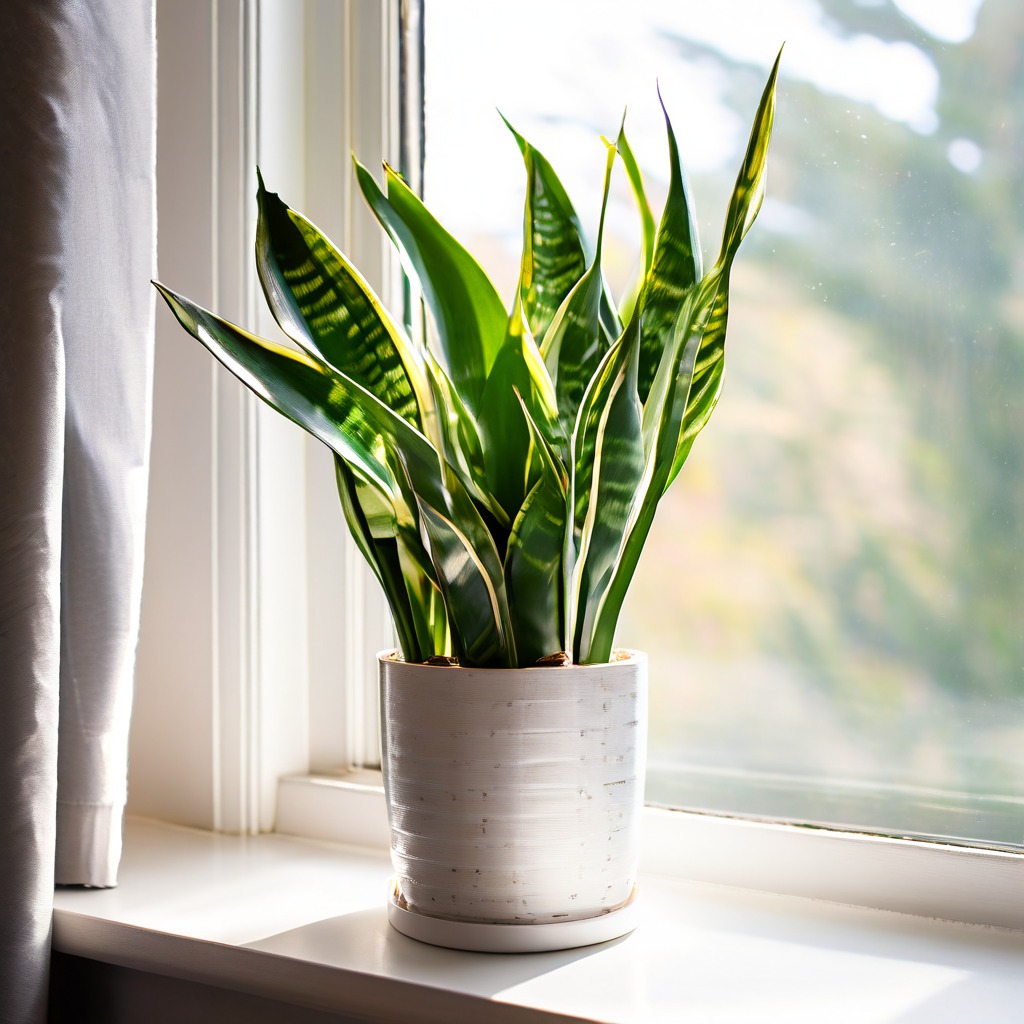
IX. Conclusion
Snake plants are versatile, low-maintenance, and aesthetically pleasing. Whether you’re growing them indoors or wondering, “Can snake plants live outside?” these hardy plants can adapt to various conditions with the right care. Add a snake plant to your collection and enjoy its beauty and benefits for years to come!


